
Cactus Around Las Vegas, Vegetation Around Las Vegas
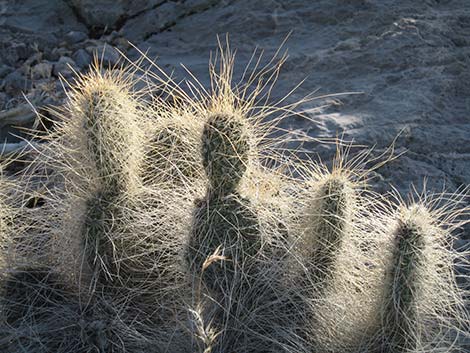 Medium-sized pads with long spines (Arrow Canyon) |
General: Grizzlybear Cactus (Opuntia polyacantha var. erinacea) is a low-growing cactus with broad, thin stem segments (pads). The pads are medium-sized for a pricklypear (to about 5-inches long by 3-inches wide). The spines are sparse to dense, short to long (to 6 inches, wavy, and flowing). The long, flowing spines sometimes completely obscure the pads. Grizzlybear Cactus is a locally common (uncommon overall, but they can be abundant in certain areas) component of vegetation communities on well-drained sandy, gravelly, and rocky soils along washes, canyons, and on upper bajadas and moderate slopes into the lower mountains in the Upper Sonoran (Mojave Desert Scrub and Pinyon-Juniper Woodland) life zone. Around Las Vegas, this cactus is found at middle elevations in the mountains, making it difficult to find without a hike. A few can be found near Willow Springs at Red Rock Canyon NCA (Petroglyph Wall Trail), and the Visitor Center on Mt. Charleston. Family: Cactus (Cactaceae). Other Names: Opuntia erinacea var. ursina. |
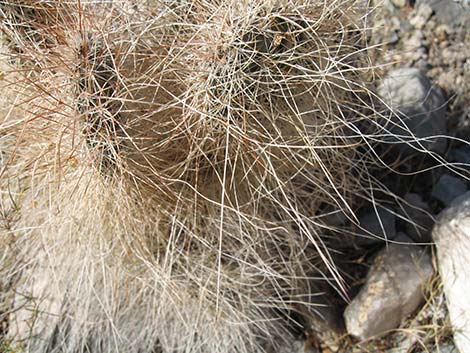 Spines long, gray, and wavy (Arrow Canyon Wilderness) |
Plant Form: Upright shrub spreading from the ground. Height: To about 18-inches tall. Trunk: None. Stems: Divided into segments; flat and broad (pancake shaped). To about 5-inches long and 3-inches wide. Stem Surface: Smooth. Spines: Spines 4 to 24 per areole, in all areoles; to about 6-inches long (variable). Glochids: Present. |
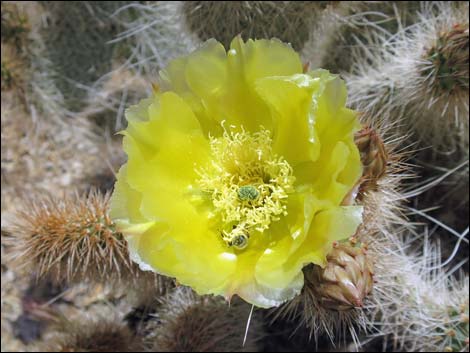 |
Flowers: Blooms late spring and early summer. Inflorescence: Solitary from upper edge of pads. Flower: yellow to magenta, about 2-inches diameter; filaments white, style white, stigma green. Fruit: Spiny. Seeds: Habitat: Dry, well-drained sandy, gravelly, and rocky soils on upper bajadas and moderate slopes in the mountains. Distribution: Southern California to Utah and Arizona Elevation: 3,000 to 7,000 feet. Comments: |
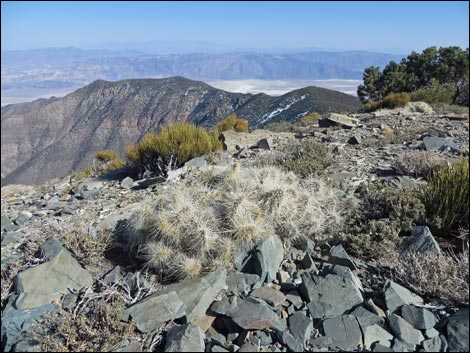 |
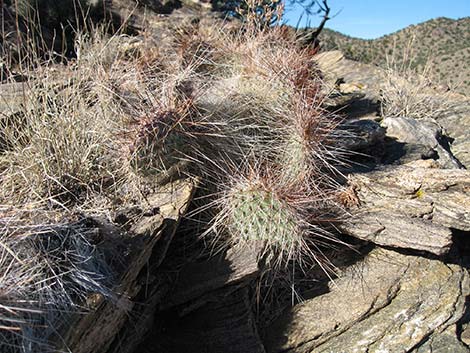 |
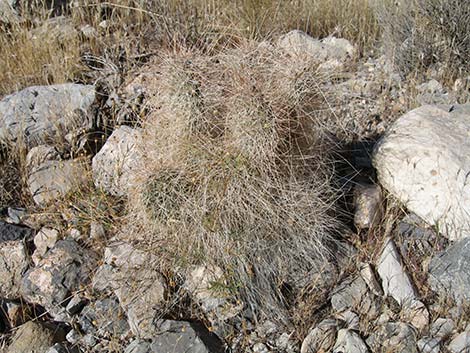 Long spines obscure pads (Arrow Canyon Wilderness) |
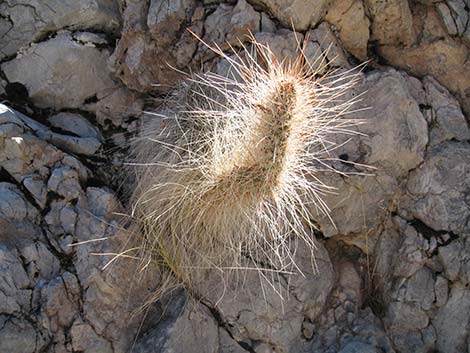 Arrow Canyon Wilderness Area |
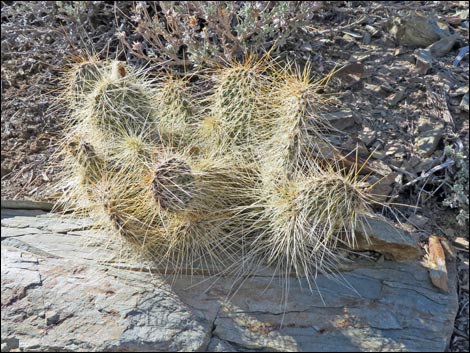 |
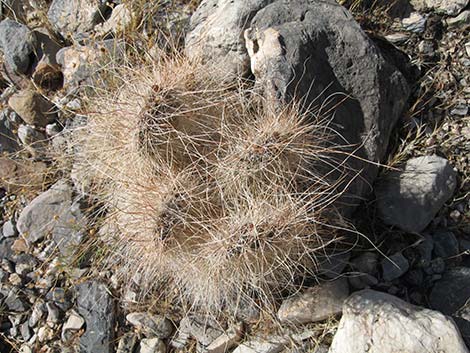 |
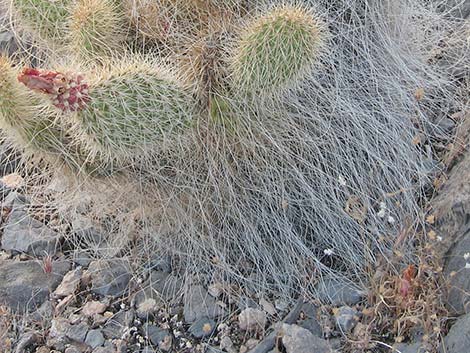 |
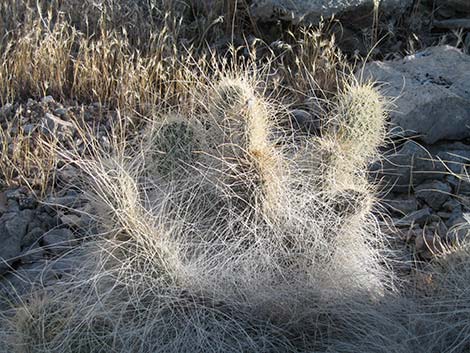 |
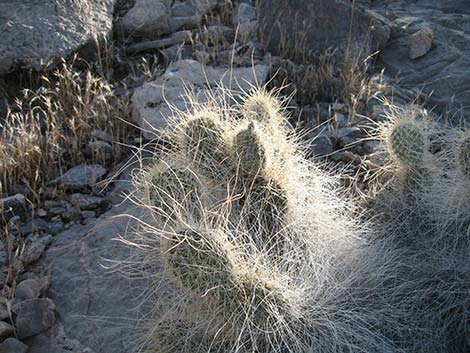 That's one very long spine sticking straight up |
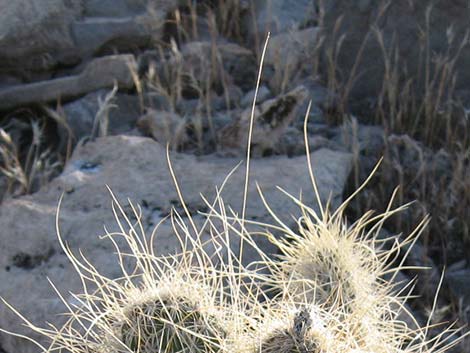 That's one very long spine sticking straight up |
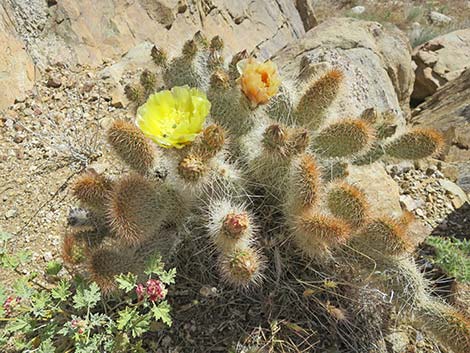 |
 |
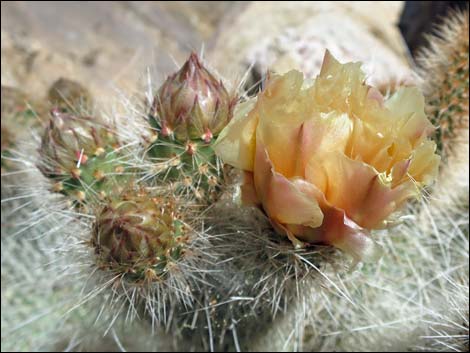 |
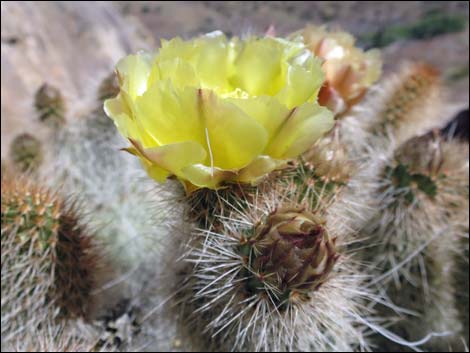 |
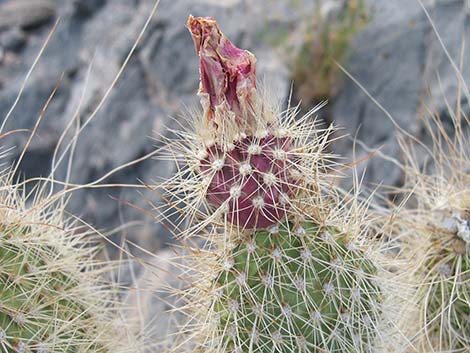 Spent flower and developing fruit |
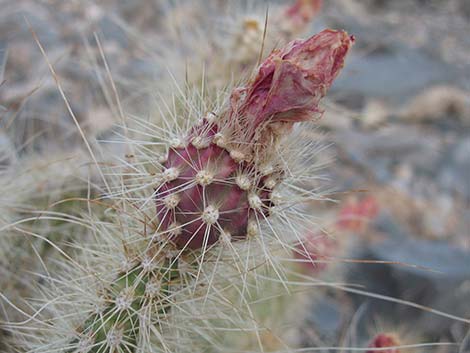 Spent flower and developing fruit |
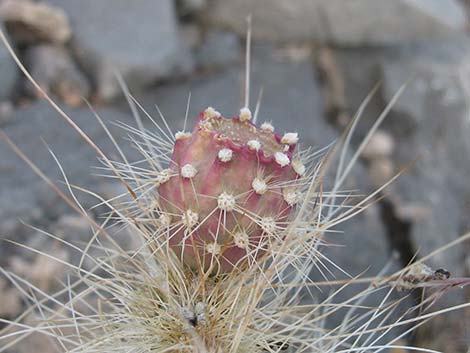 |
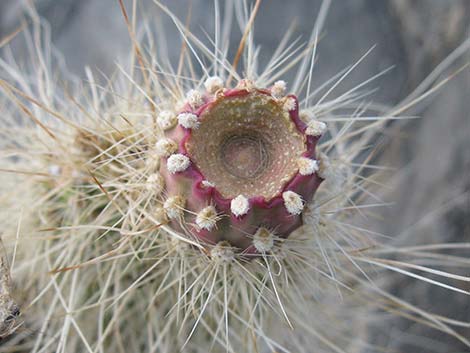 |
Note: All distances, elevations, and other facts are approximate. Names generally follow the USDA database.
![]() ; Last updated 220126
; Last updated 220126
| All Cactus | Plant Species Index | Glossary | Copyright, Conditions, Disclaimer | Home |